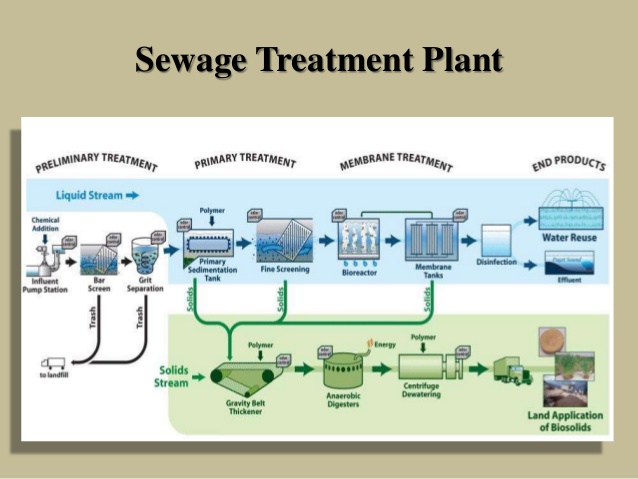
Conventional sewage treatment vs. packaged treatment plants
General Introduction
Sewage treatment is a vital process that aims to extract harmful pollutants from wastewater before it is discharged into the environment. Conventional sewage treatment plants and packaged treatment plants are two common, well-known, and extensively used methods for effectively treating wastewater. While both methods serve the same purpose, they vary in size, complexity, and cost-effectiveness. In this blog, we will be exploring the differences between conventional sewage treatment and packaged treatment plants and how they impact the treatment process. So, let us compare the two commonly used methods of sewage treatment and see how they differ from each other.
Conventional Sewage Treatment
Conventional sewage treatment plants are the most common method for effective treatment of wastewater. These treatment plants are usually found in urban areas and are designed to handle large volumes of sewage. The process of sewage treatment in conventional sewage treatment plants involves several stages, as given below:
- Primary Treatment: In the primary stage, the wastewater is screened for large particles such as stones, plastics, and other debris. The water then flows into a sedimentation tank, where heavy solids settle to the bottom and lighter materials such as oil and grease float to the surface.
- Secondary Treatment: In the secondary stage, biological processes are used to remove dissolved and suspended organic substances from the wastewater. This is done by introducing bacteria and other microorganisms, as a part of the biological process, to the water. The bacteria and microorganisms break down the organic matter into simpler substances. This process is a bit time-consuming and may take up to several days to complete.
- Tertiary Treatment: In the tertiary, or final, stage, the wastewater is further treated to get rid of any remaining impurities. This may include the use of chemicals, such as chlorine or ozone, to disinfect the water and kill the remaining bacteria or viruses in it.

Packaged Sewage Treatment
Packaged treatment plants are a more recent development in the field of sewage treatment and are believed to be an advancement in the wastewater treatment system. These plants are designed to be compact and portable, making them ideal for smaller communities and remote locations where the implementation of large or conventional systems can be difficult. Packaged treatment plants come in different sizes and can be easily transported to the location where they are needed. The process of sewage treatment in packaged plants involves the following stages:
- Screening: In screening, the wastewater is screened to remove larger objects and debris. This is usually done using a mechanical screen or a grit chamber.
- Biological Treatment: In this stage, bacteria and other microorganisms are introduced to the wastewater to break down the organic matter. This is usually done using an activated sludge process or a moving bed bioreactor.
- Tertiary Treatment: In the final stage, the water is further treated to remove any remaining impurities, like in a conventional treatment system. This may involve the use of chemicals or filtration systems to remove particles and contaminants.

Comparison: conventional sewage treatment vs. packaged treatment plant
The primary difference between conventional sewage treatment and packaged treatment plants is the size and complexity of the systems. Conventional treatment plants are designed to handle large quantities of wastewater and are therefore significantly larger and more complex than packaged treatment plants. Packaged sewage treatment plants, on the other hand, are compact and more portable, making them ideal for smaller communities and remote locations.
Another key difference between the two methods is the cost of the system. Conventional sewage treatment plants are generally more expensive to build and maintain than packaged treatment plants. This is due to the larger size and complexity of the systems, as well as the requirement for more specialised equipment and personnel.
Packaged treatment plants, on the other hand, are cost-effective and need less maintenance. They are also quite easy to install and can be up and running in a shorter amount of time than conventional sewage treatment plants.
However, conventional plants have some advantages over packaged sewage treatment plants. For example, they are better equipped to handle large volumes of wastewater and are therefore more suitable for urban areas with high population densities. They also have a higher level of treatment capacity and are capable of eliminating a wider range of pollutants from the wastewater.
Wrapping Up
In conclusion, both conventional sewage treatment systems and packaged treatment plants have their own set of benefits and drawbacks. As learned in the article, conventional plants are great for larger cities with high population densities as they can handle large volumes of wastewater and have a higher level of treatment capacity. However, packaged sewage treatment plants are a more cost-effective option, require less maintenance, and are perfect for smaller communities and remote locations. Regardless of which method is chosen, it is vital to ensure that the treatment process is efficient, environmentally friendly, and removes pollutants effectively. By selecting the right sewage treatment method for your community’s needs, you can help protect the environment and promote a healthier future for generations to come




